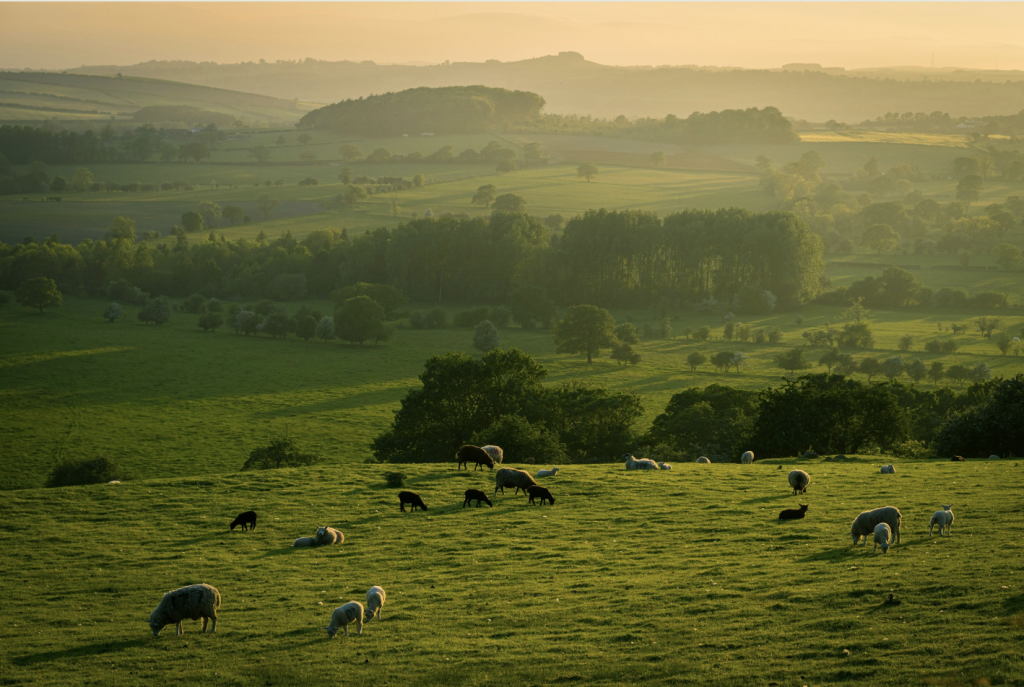
Gastronomy: Canadian Food in the 21st Century
Stratford Chefs School immerses students in hands-on culinary training with Practical courses that build real-world culinary skills, but also teaches Theory courses such as Food History, Culinary Management, Communications, Nutrition, Gastronomy and more. Exploring these multiple aspects of cuisine contributes to the development of skilled, well-rounded, thoughtful chefs.
Critical issues facing our food systems, sustainability, and the roles food and cooking play in modern culture are examined in Level 2 Gastronomy, taught by Randi Rudner. When asked to reflect on the food world around them and investigate a current issue in Canadian food production of personal interest, a number of thought-provoking essays were submitted by our Level 2 Students. We are pleased to share with you the Gastronomy report by Jessica Wilson (Class of 2025) that examines agriculture land trusts as a means of increasing land access and reimagining land tenure. We are thrilled to share her report with you, with her permission.
'Agricultural Land Trusts as a Practice of Increasing Land Access and Reimagining Land Tenure' | By Jessica Wilson

Changing Trends in Canadian Agriculture
Looking at data from Canada’s 2021 Census for Agriculture, we can identify a series of trends that are changing the landscape of Canadian agriculture. Land ownership patterns have shifted; the number of landowners has decreased and the average size of a holding has increased with small to midsize farms rapidly declining (Hamilton 2005, Stats Canada, 2022). The average age of farmers in Canada has increased to 56 (Stats Canada, 2022). And only 8.9% of Canadian farmers are under 35 (Stats Canada, 2022). Looking at the relationships between this data we can parse out what this actually means for Canadian producers (and consumers).
Through consolidation of small family run farms into large agribusiness owned land holdings, Canadian agriculture has moved away from a family unity approach to one of consolidation and industrialization. Industrialization is not necessarily a bad thing, it reduces labour burden and allows for farmers to increase their yields. But, large agribusiness farms tend to engage in monoculture production and produce in economies of scale to make a profit. This shift supports an export oriented mode of production, and reduces the strength of local food systems (Hamilton, 2005).
The Decline of Food Production Capacity
Of the 189,874 farms recorded in the 2021 Census, only 12% of farms have reported a succession plan (Stats Canada, 2022). This, combined with the data that the average age of Canadian farmers is 56 we can infer that in the next decade there will be a massive increase in prime farmland entering the real estate market as farmers retire. But who will buy the farmland? Land values have been exponentially increasing as agribusinesses buy land to add to their landholdings, and developers buy land to convert into housing or mining (Hamilton, 2005; Daly 2024). Farmland that is periurban is the most valuable, for both farmers and developers, because of proximity to urban areas and the tendency for the land to be flat and well drained (Daly, 2024). Young farm operators (under 35), or hopeful operators, have identified that land prices are the biggest barrier to entry (Daly, 2024). They simply cannot compete with large farming corporations or developers. We are losing approximately 117,000 acres of farmland a year to urban expansion and aggregate mining (OFT, 2025). The relationship between this data shows us that Canada’s capacity for food production is declining both in the number of farmers through age and retirement, and the inability to afford farming. And available farmland is declining through development.
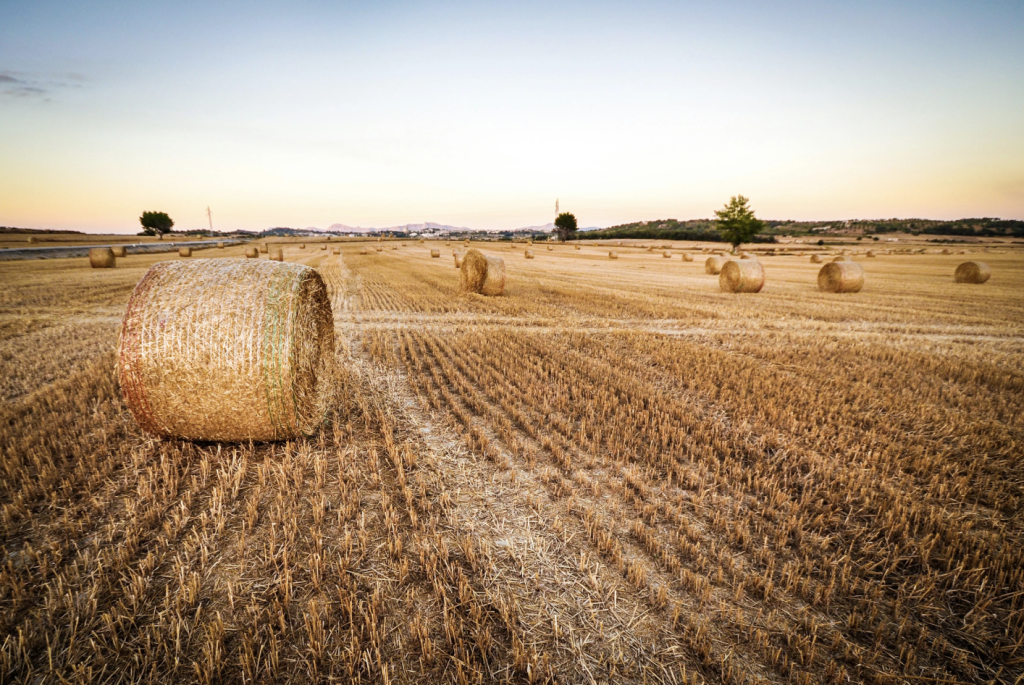
Private Land Ownership and Land Trusts
Canada was built on agricultural promise, families were incentivized to settle in Canada through land grants, the act of giving ownership of a swatch of land to a family, with the intent of farming and development. This has developed into the current dominant land tenure system in which land is classified through private ownership, and this ownership provides the title holder with a set of rights associated with the land. If we understand these rights as relational, private land ownership gives rights to some, and subtracts rights from non land owners. Land trusts have the potential to mitigate the challenges of the above trends through farmland conservancy, increasing economic access to farmland, and building supported rural communities by asking us to reimagine the constraints of private land ownership.
Different Categories of Land Trusts
Land trusts are non-government, non-profit, community based organizations that hold land in the benefit of the community to which the trust is accountable to (Daly, 2024; Guajaqc and Attridge, 2024). Land trusts are not a monolith, there are different types of land trusts with different goals. Blair Hamilton (2005) describes three different categories of land trusts; conservation land trusts which aim to prohibit development and protect ecologically significant land or historical sites, stewardship land trusts which provide a framework for land care, and economic land trusts which work towards social and economic goals like affordable housing. Land trusts that focus on preserving agricultural lands combine the goals of all three. A contemporary description of land trusts by the Alliance of Canadian Land Trusts expands the goals from primarily landholding and land care, to include explicit goals of community capacity building, land connection, public education and outreach, research, and fundraising (Guajacq and Attridge, 2024). This combines the commitment to access and landcare with goals of community building and shifting the public’s view of land as a private commodity to a shared dynamic resource.
How Agricultural Land Trusts Work
The first recognized land trust in Canada was established in 1919 in Hamilton, Ontario as the Hamilton Naturalist Club (Guajacq and Attridge, 2024). Land trusts became more popular across Canada in the 1990s and developed alliances across regions, provinces, and nationally to share knowledge and resources, and become policy advocates. The Institute of Community Economics suggests that the development, and recent interest and support, of land trusts is a response to the concentration of ownership, housing shortages, agricultural land shortage, and increasing land values (Hamilton, 2005).
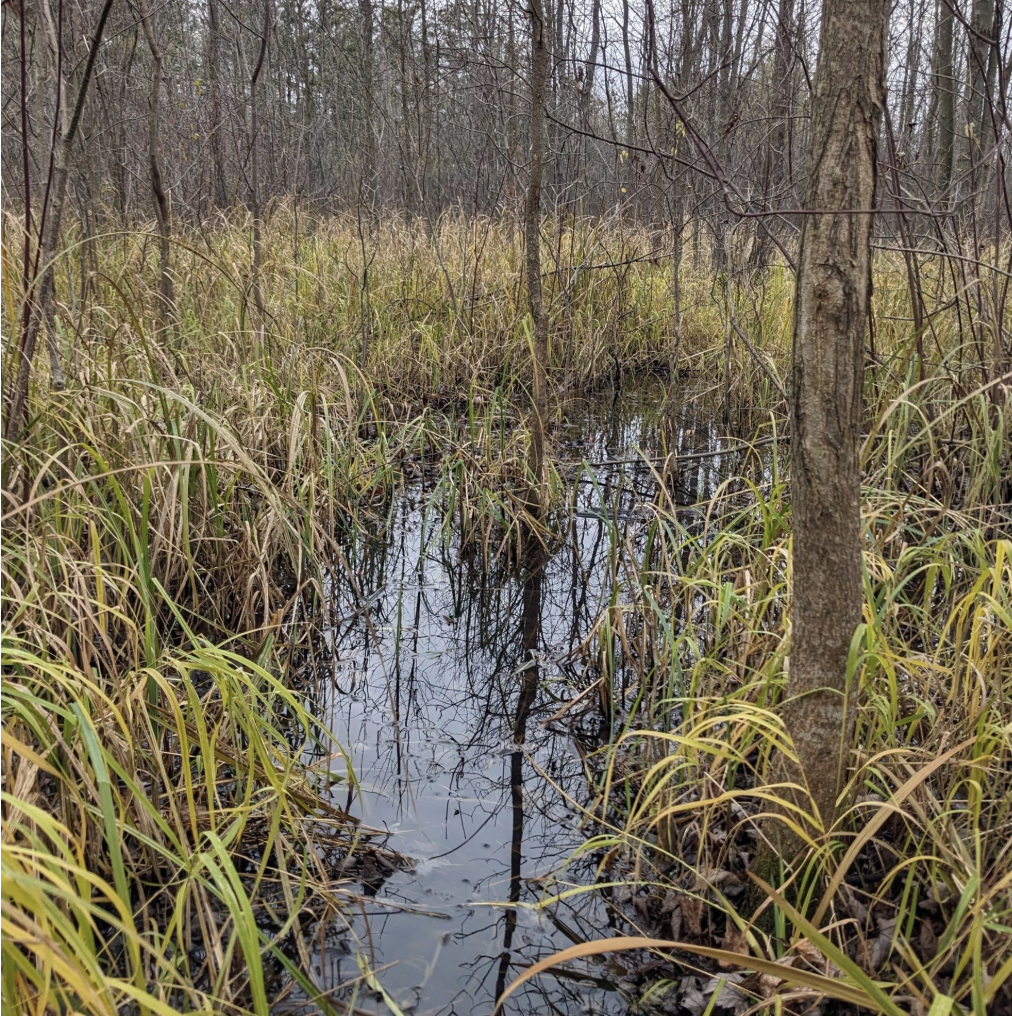
So how do agricultural land trusts work? Land trusts acquire land through buying parcels of land, or through donation. After the acquisition of land, land trusts engage in the development of ground leases in which farmers who want to lease the land enter into negotiation (Daly, 2024). Often ground leases define land stewardship practices such as an emphasis on regenerative agriculture, as well as economic clauses that ensure a percentage of products produced on the farm will be entered into the local food economy (Daly, 2024). Ground leases tend to be long term (up to 99 years), low cost, and follow a shared equity model in which leaseholders are able to grow equity through investing into the development of housing or infrastructure on the property (i.e. the land trust will “buy back” infrastructure at the end of the lease agreement). In an era where farmland is prohibitively expensive, and new farmers leasing from private landlords are unprotected, long term low cost ground leases offer new farmers access to reasonable and protected leases. This security incentivizes farmers to invest in the property and community. Ground leases are a bridge between private and public ownership. Land trusts also offer a network of support and resource sharing in which farmers in the region are able to share knowledge and equipment.
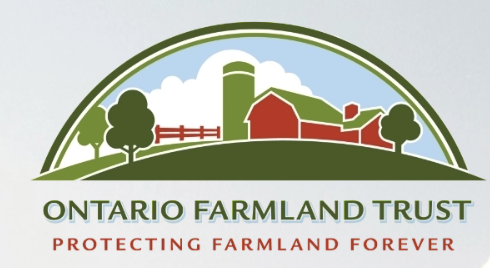
Incentives for Farmers
An incentive for farmers to donate their land to a land trust for continued protection after retirement is the Ecological Gift Program administered by Environment and Climate Change Canada (Attridge 2024; Government of Canada 2024). Through this program, land that has been identified as ecologically sensitive and/or contributes to Canada’s biodiversity and environmental heritage, can be donated to a land trust with conservation intent, and the donors are given additional tax benefits (Attridge 2024; Government of Canada 2024). Lands are appraised by Environment and Climate Change Canada, and a donation receipt is offered for the market value of the land (Attridge 2024; Government of Canada 2024). Under the Ecological Gifts Program, a higher amount of the donation value can be claimed against taxes for a longer period of time, and there is an exemption of capital gains taxation (Attridge 2024; Government of Canada 2024).
Conservation Easements
There are other ways in which landowners can commit to conservation while maintaining ownership of the land including enacting conservation easements. The difference between donating land to an agricultural land trust, and farmland owners enacting a conservation easement, is that where easements limit or prohibit development in the event of sale, there is no requirement for said lands to maintain in active agricultural production (Daly, 2024). Donation to an agricultural land trust ensures the land is protected from development and will be leased to continue production (Daly, 2024). Donating land can feel uncomfortable to landowners in our dominant land tenure system because we understand that giving up ownership is also giving up rights to the land (ie living on the land), but land trusts operate under different assumptions and work with donors to define the terms of donation, and in a variety of cases donors continue living on the land (Daly, 2024).
The Tragedy of the Commons Trap?
Some would argue that agricultural land trusts are naively utopian, unattainable, or unsustainable through the core belief that everyone should have access and the right to benefit from agricultural lands. A common critique is that agricultural land trusts could fall into the trap of the tragedy of the commons. A theory popularized by Garret Hardin in the 60s, the tragedy of the commons refers to the phenomenon when a group of people have unrestricted access to a resource, we are likely to exploit said resource for individual gain to the point of resource destruction (Peredo et al., 2020). We see this very clearly in how we have decimated the cod industry through overfishing and resource exploitation. But, my response to this critique is that 1. The dominant way of North American industrial agriculture founded on resource extraction is already destroying natural resources; 2. Land trusts monitor land use and have code of ethics and stewardship frameworks that ground leasees agree to, therefore it is not a true “common”; and 3. The theory of tragedy of the commons sees our relationship to natural resources through an inherently capitalistic lens in which people will always exploit resources for individual profit. But what if that’s not the goal? What if we engage with the land through stewardship and relationship rather than through control and resource extraction? Access to resources is relational and land trusts provide the opportunity to grow collective access and wealth through relationships with the land and community.
Re-imagining Stewardship of Natural Resources
When I envision the future, the words of abolitionist Mariame Kaba come to mind, “Imagination is required because we need to invent new worlds and new ways of being with each other.” Land trusts offer us an avenue of imagination that expands our understanding of land ownership and rights of landowners, rights to resource access, and invites communities to engage in the stewardship of natural resources. From an agricultural lens, land trusts protect Canada’s agricultural lands through conservation commitments, improve access to agricultural lands for those facing barriers to entry, offer sustainable alternatives in succession planning, and strengthen local food systems through encouraging local economies.
About Jessica Wilson
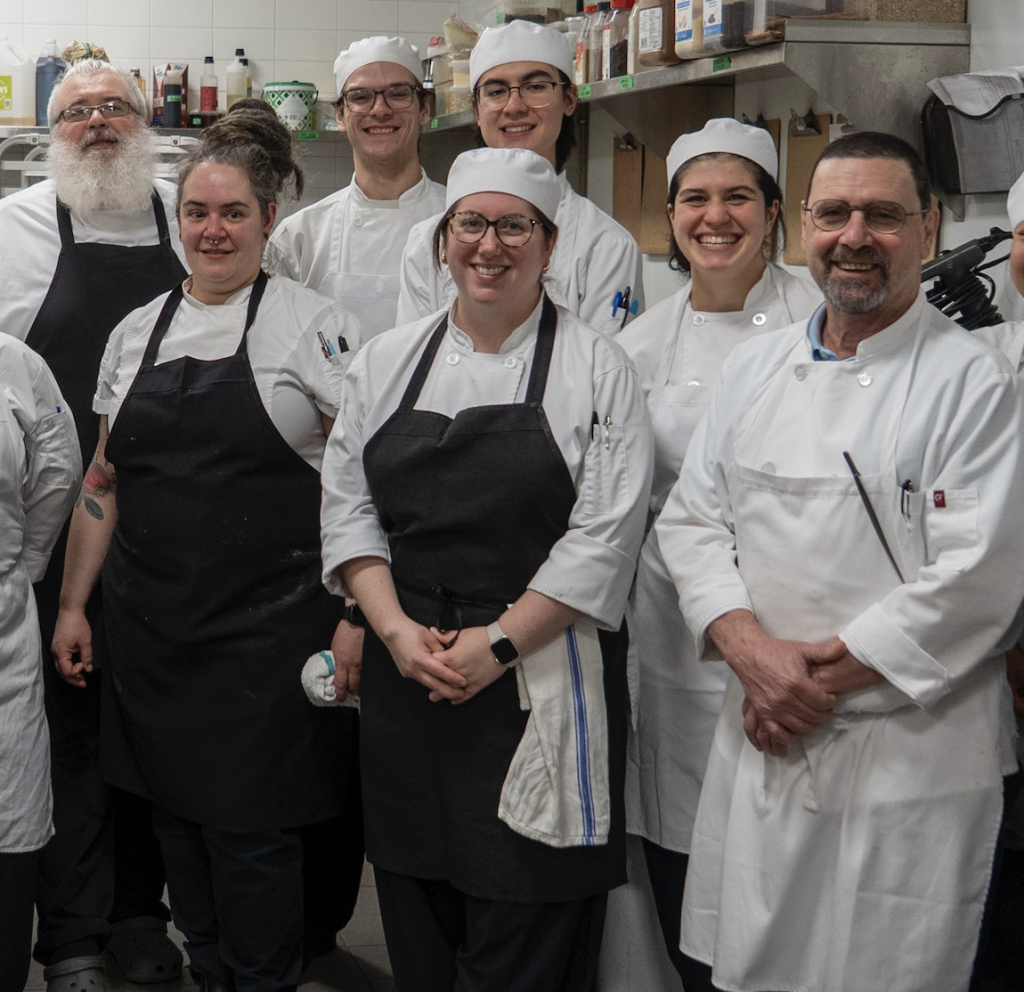
Jessica Wilson completed our 32 Week Apprenticeship Program in March and will graduate with Distinction in June as a member of our Class of 2025. Prior to enrolling at Stratford Chefs School, Jessica studied agricultural and community development at the University of Guelph, focusing on the role food and agriculture have in community building. She studied organic agriculture in Cuba, and learned how food - from production to cooking together, sharing a meal, and sharing ideas - can be an important tool for community development and equity building. Throughout her post secondary education, Jessica worked in restaurants to pay her bills in various roles, including as a dishwasher, server, barista, cook, and baker, and dreamt of how to align her passion for food with a sustainable career, like farming and cooking farm to table meals sprinkled with conversation and education.
As Baking Manager for a Market in Hamilton, Jessica managed a team of five bakers and oversaw the commissary bakery that supported three cafe and retail locations, implementing a management infrastructure to track sales, manage inventory, improve costing as well as improve the quality and freshness of the core cafe menu. Before studying at Stratford, Jessica was the baker and recipe developer at a small scale regenerative farm in Hamilton, Ontario called Mad Meadow Farm, living the life she day-dreamt about. As a one person kitchen program, her focus was taking the produce grown on the farm and transforming it into value-added products to sell at farmers' markets and catering pop up events around Hamilton, focusing on vegetable forward sandwiches, salads, and charcuterie boxes.
On her application, Jessica told us: "I am drawn to Stratford Chefs School because of its legacy of wholistic training in both culinary skills and hospitality management. I believe my own approach to continuous learning and skill development is aligned with the teaching style. I appreciate learning the science behind the skill, which then helps me apply interesting and thoughtful flavours in my recipe development. There is duality in my culinary goals. I would like to integrate my passion for food and agriculture, with my interest in public education. For me this looks like food writing, developing workshops to improve food literacy, and public education that integrates the ways in which food, from production to the food choices we make on a daily basis, is political, personal, and fun."
Bibliography
Attridge, Ian. 2024. “Land Conservation with Public Benefits: Incentives, Funding, and Process Supports in Canada: Preliminary Results.” Alliance of Canadian Land Trusts. https://aclt-acoc.ca/wp-content/uploads/2024/08/Land-Conservation-with-public-benefits.pdf
Daly, Meghan. 2024.”Cultivating Access: The Benefits and Challenges of Using Community Land Trusts to Preserve Farmland and Support Farmers.” Graduate Student Theses, Dissertations, & Professional Papers (12330): 1-93. https://scholarworks.umt.edu/etd/12330
Guajacq, Eugenie, and Ian Attridge. 2024. “Land Trust Starter Guide” Alliance of Candian Land Trusts. https://olta.ca/wp-content/uploads/2024/08/2023_land_trust_starter_guide_EN_print.pdf
Government of Canada. 2024. “Ecological Gifts Program.” https://www.canada.ca/en/environment-climate-change/services/environmental-funding/ecological-gifts-program/overview/html
Hamilton, Blair. 2005. “Agricultural Land Trusts: Preserving Small Farm Heritage.” Canadian Centre For Policy Alternatives - MB. https://www.policyalternatives.ca/sites/default/files/uploads/publications/Manitoba_Pubs/2005/Agricultural_Land_Trusts.pdf
Ontario Farmland Trust. 2025. https://ontariofarmlandtrust.ca
Ontario Land Trust Alliance. 2024. https://otla.ca
Peredo, Ana Maria, Helen M Haugh, Marek Hudon, and Camille Meyer. 2020. “Mapping Concepts and Issues in the Ethics of the Commons: Introduction to the Special Issue.” Journal of Business Ethics: 1-14. https://doi.org/10.1007/s10551-020-04584-4
Statistics Canada. 2022. “Canada’s 2021 Census of Agriculture: A story about the transformation of the agriculture industry and adaptiveness of Canadian farmers.” https://www150.statcan.gc.ca/n1/daily-quotidien/220511/dq220511a-eng.htm
Statistics Canada. 2022. “Succession plan for the agricultural operation, Census of Agriculture, 2021.” https://www150.statcan.gc.ca/t1/tbl1/en/tv.action?pid=3210024401
Learn More
Learn more about our Enriched Cook Apprenticeship 32 week program.
Learn more about our Open Kitchen recreational cooking classes and other events.
Do you have questions about our Program?
Contact us by email admin@stratfordchef.com or call 519.271.1414
